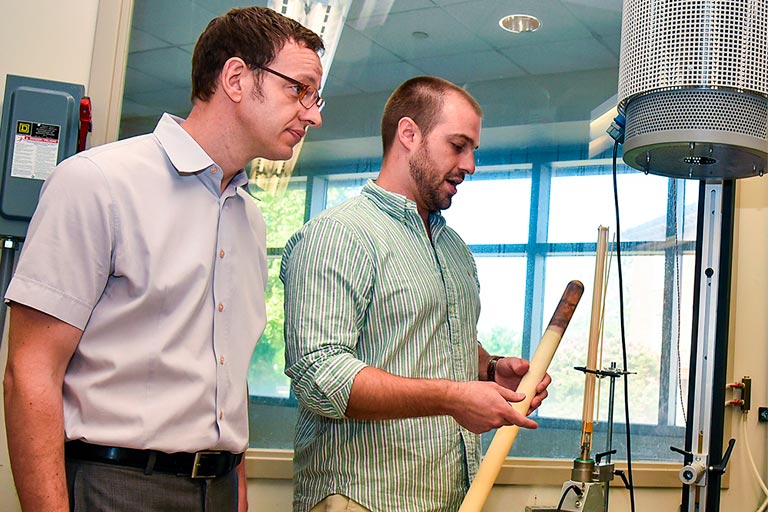Student Research Leads to New Understanding of Compounds

Maik Lang and Jacob Shamblin discuss the use of equipment in a Science and Engineering Research Facility lab.
Jacob Shamblin (MS/NE ’17) and Maximilian Heres, a graduate student in the Department of Chemical and Biomolecular Engineering, recently authored a paper looking into why certain metals can exhibit insulated properties at times.
The metals, known as nickelates, have the inherent ability to switch between insulated states and conductivity. This property makes them effective transistors and able to serve as high-temperature semiconductors, both of which are key factors in fields related to energy and electronics.
Discovering how to control that property has major implications for technology, helping to spur on the work of Shamblin and Heres.
“These compounds are interesting because they undergo a sharp metal-insulator transition (MIT) and the temperature at which this occurs can be tuned by changing the size of the atoms in the crystal structure,” said Shamblin. “This behavior has long been known about but there has not been any definitive understanding as to why this occurs.”
Assistant professors Maik Lang of nuclear engineering, Joshua Sangoro of chemical and biomolecular engineering, and Steven Johnson and Haidong Zhou, of physics and astronomy, all took part in the project.
The team’s research dealt with lanthanum nickel oxide (LaNiO3) and neodymium nickel oxide (NdNiO3) in particular.
“The MIT in these materials is coupled to changes in their crystal structure and magnetic properties,” said Lang. “Our research on nickelates has led to an entirely new way to understand the MIT due to strong electron-lattice coupling and dynamical polaron condensation.”
Lang said the origin of the transition in the materials has been the subject of intense debate, and that this was an excellent opportunity for studying the relationships between structural and functional material properties.
He credited the availability of Oak Ridge National Laboratory’s Spallation Neutron Source and experiments conducted by Sangoro’s lab as being essential to the work.
ORNL’s Joerg Neuefeind and Madrid Institute of Science and Materials’ J.A. Alonso also worked on the project, which was published in Nature Communications.